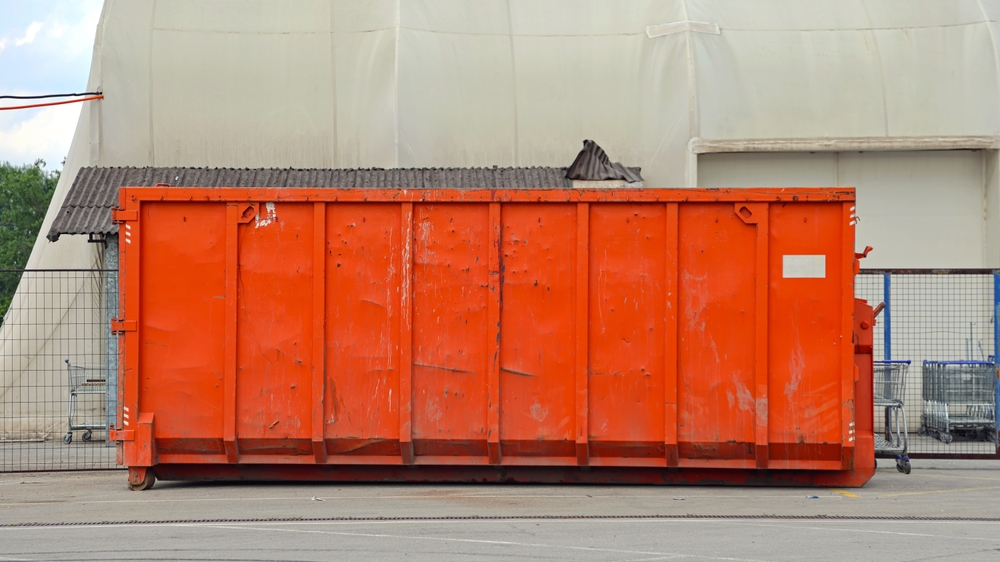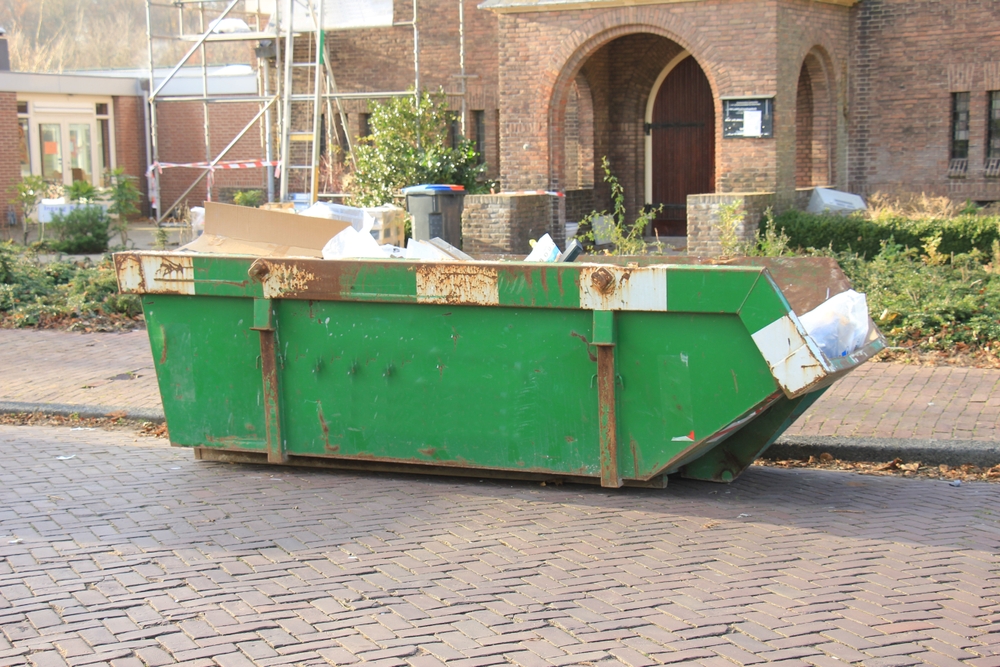June 21, 2024 - Benjamin Ehinger
Where Does Garbage Go? Understanding Waste Management Systems
CALL NOW 844-762-8449
When you take out your trash, it begins a complicated journey that few consider in their daily lives. Your garbage is transported away from your home to become part of a larger story—one of environmental impact, resource management, and sustainability challenges. Understanding where garbage goes and how it is processed is crucial, as it can influence how you choose to consume and discard materials in your daily routines.
Different types of waste—whether categorized as recyclable, compostable, or landfill material—are handled through an intricate system. This system includes collection, sorting, and eventual disposal or recovery. Sorting facilities separate recyclables from general waste, while compostable materials may go towards creating nutrient-rich soil. Finally, non-recyclable and non-compostable garbage often end up in landfills or are incinerated. How these processes are managed plays a significant role in the health of our environment, making it imperative to be mindful of the waste we generate and the ways we dispose of it.
In this journey, every step, from the initial pickup to the various methods of transfer, is part of a larger waste management system designed to process garbage efficiently and responsibly.
 When your garbage is taken away, it embarks on a journey of transformation. Some materials are reclaimed and reprocessed, others are broken down to return to the soil, and some even become a source of energy.
When your garbage is taken away, it embarks on a journey of transformation. Some materials are reclaimed and reprocessed, others are broken down to return to the soil, and some even become a source of energy.
 When garbage is improperly managed, it can lead to severe repercussions for your environment and health. These consequences permeate through the air, water, and soil, escalating greenhouse gas emissions, and affecting both wildlife and human health.
When garbage is improperly managed, it can lead to severe repercussions for your environment and health. These consequences permeate through the air, water, and soil, escalating greenhouse gas emissions, and affecting both wildlife and human health.
Key Takeaways
- Your garbage’s journey is more complex than simply being taken away from your home.
- Waste is processed in various forms, which can include recycling, recovery, and disposal in landfills or incineration.
- The waste management process affects environmental health, highlighting the importance of responsible consumption and disposal.
Understanding Waste Management
Effective waste management involves identifying different waste types and applying a systematic approach to handling them. This ensures that your household and business refuse is processed responsibly and sustainably.Types of Waste
Solid Waste: This is the variety of waste that originates from your household and public spaces. It encompasses everything from paper to broken furniture. Municipal Solid Waste (MSW) refers specifically to the refuse collected by municipal authorities, often including recyclables and organic waste.- Recyclables: Items that you can segregate from general waste and processed for reuse. They include plastics, paper, glass, and metals.
- Organic Waste: Comprises food scraps and yard waste that can be composted to avoid landfilling.
- Hazardous Waste: Special products that you must handle separately due to their toxic nature. These include batteries, chemicals, and fluorescent bulbs.
- Municipal Waste: A broader term that refers to the waste collected by municipal services, it includes recyclables, organic waste, and sometimes, even small quantities of hazardous materials.
- Industrial Waste: By-products from manufacturing processes, such as slag and ash.
- Agricultural Waste: Waste created from farming activities. Examples include manure and crop residues.
Waste Hierarchy
The waste hierarchy is a guide for making decisions about waste management.- Prevention: The most effective form of waste management is not to create waste in the first place.
- Reuse: Before considering recycling, see if items can be reused.
- Recycle: When reuse is not an option, recycling allows materials to find new life.
- Recovery: If materials cannot be recycled, recovering energy from them is a viable option.
- Disposal: As the last resort, some waste will need to be disposed of, most commonly in landfills or through incineration.
Collection and Transfer of Waste
Waste collection and transfer are crucial stages in the journey of your garbage from your home to its final destination. These stages involve a series of organized actions, utilizing various forms of transportation and facilities.From Curbside to Transfer Stations
Your waste journey begins when garbage trucks visit your neighborhood, efficiently collecting waste from the curbside. Municipalities have scheduled days for waste collection to streamline this process. Once garbage trucks are filled, they head to transfer stations. At these stations, waste is sorted, and sometimes compacted, to reduce its volume, making the subsequent transportation stage more efficient. Transfer stations serve as a temporary destination before waste is sent to its final disposal site.| Key Point | Detail |
|---|---|
| Scheduled Waste Collection | Designated days for different types of waste by municipalities. |
| Transfer Station Function | Sorting and compacting waste to facilitate easier transport. |
Transportation and Logistics
After the initial sorting and compacting, your waste is prepared for longer-distance travel. It can be transported by a variety of methods including garbage trucks, larger vehicles like barges, or even railways depending on the distance and the geographic context. The logistics behind waste transfer are carefully planned to optimize routes and reduce environmental impact. Safe and strategic transportation is imperative to manage the significant volumes of waste generated daily.| Mode of Transport | Use Case |
|---|---|
| Garbage Trucks | Short-distance hauling to transfer stations. |
| Barge | Transportation of large volumes of waste across water bodies. |
Recycling and Recovery
 When your garbage is taken away, it embarks on a journey of transformation. Some materials are reclaimed and reprocessed, others are broken down to return to the soil, and some even become a source of energy.
When your garbage is taken away, it embarks on a journey of transformation. Some materials are reclaimed and reprocessed, others are broken down to return to the soil, and some even become a source of energy.
Material Recovery Facilities
Material Recovery Facilities (MRFs) are pivotal in sorting recyclable waste. They come in two types: ‘clean MRFs,’ where materials already sorted by consumers are processed, and ‘dirty MRFs,’ which handle mixed waste. At these facilities, your recyclables are separated, cleaned, and prepared for recycling.Recycling Processes
The journey of recyclable waste at recycling centers involves several steps. Papers, plastics, metals, and glass are sorted, cleaned, and transformed into new products. This process reduces the need for raw materials and energy, supporting a move towards zero waste goals. Recycling rates have become a measure of how well a population is doing to help the environment.Composting and Organic Diversion
Composting and organic diversion strategies take your yard waste and food scraps and turn them into nutrient-rich compost. These processes, often aided by composters and anaerobic digesters, enrich the soil and reduce greenhouse gas emissions from landfills, playing a significant role in the cycle of sustainability.Waste-to-Energy Technology
Some of the waste that cannot be recycled or composted is converted into electricity or heat at waste-to-energy plants. Technologies like incineration, pyrolysis, and anaerobic digestion drive this process by breaking down waste and capturing the energy released. These waste-to-energy facilities are an essential component in managing waste and providing renewable energy. Through these methods, garbage is not just being buried in the ground; it’s being harnessed to recirculate resources and create energy, contributing to a cleaner, more sustainable future.Environmental and Health Impacts
 When garbage is improperly managed, it can lead to severe repercussions for your environment and health. These consequences permeate through the air, water, and soil, escalating greenhouse gas emissions, and affecting both wildlife and human health.
When garbage is improperly managed, it can lead to severe repercussions for your environment and health. These consequences permeate through the air, water, and soil, escalating greenhouse gas emissions, and affecting both wildlife and human health.
Air, Water, and Soil Contamination
Air pollution from garbage arises primarily when waste is burned. This process releases harmful substances like fly ash and particulate matter into the atmosphere, which can contaminate the air you breathe. Chemical seepage from waste pollutes water bodies and the soil, affecting the quality of your drinking water and the food produced on contaminated land. Notably, leaks from landfills introduce hazardous compounds, endangering surrounding ecosystems and depleting natural resources.Greenhouse Gas Emissions
Landfills are significant contributors to methane emissions, a potent greenhouse gas with an impact on climate change that is 25 times greater than carbon dioxide over a 100-year period. As organic waste decomposes anaerobically in landfills, it releases methane, exacerbating the greenhouse effect and affecting your planet’s climate. Reducing, reusing, and recycling can help mitigate these emissions, preserving environmental health.Impact on Wildlife and Human Health
Pollution from waste can result in detrimental effects on wildlife, disrupting habitats and poisoning the food chain—a process that ultimately impacts your own health. Animals mistake plastics for food, leading to ingestion and entanglement, while toxic substances from waste can lead to serious health disorders in humans, including cancer and cardiovascular diseases. Your actions towards waste reduction can positively influence both wildlife conservation and public health.Frequently Asked Questions
In this section, you’ll find answers to common inquiries about the lifecycle of your trash and the practices employed to manage it.What is the journey of garbage after it is collected from homes?
After collection from homes, garbage embarks on a complex journey. Initially, it’s taken to waste management facilities where it’s sorted. Recyclable and compostable materials are separated from general waste. The remaining garbage may end up in landfills or incineration plants, depending on its nature and local policies.What are the most common methods used for garbage disposal worldwide?
Globally, the most prevalent garbage disposal methods include landfilling, incineration, and recycling. Incineration reduces waste volume and can generate energy. Recycling reprocesses materials into new products, while landfills remain the most common destination for non-recyclable waste.How does the United States manage its garbage disposal?
The United States primarily relies on landfills to manage the majority of its municipal solid waste. However, there’s an increasing emphasis on recycling and waste-to-energy plants that help reduce the environmental impact of waste disposal.What are the environmental impacts of landfills?
Landfills can have a significant environmental impact by contributing to groundwater contamination, emitting greenhouse gases like methane, and taking up large areas of land. They can also affect local wildlife and ecosystems.How is recycling integrated into waste management systems?
Recycling is integrated into waste management systems through the separation of recyclable materials from general waste streams. These materials are then sent to recycling centers where they are processed and manufactured into new products, reducing the need for virgin materials.Is there a risk of running out of space for landfills in the future?
With increasing waste production, there is a concern of potentially running out of landfill space in the future. This has led to efforts in reducing waste generation, improving recycling rates, and seeking alternative disposal methods like waste-to-energy facilities.RECENT BLOGS
Our Reviews
Tyler Floyd
1719520303
Incredible customer service, very informative
Natalie Davidson
1719440638
Heather provided the best customer service that I have received in a very long time. She was knowledgeable, informative without being pushy, friendly and efficient. I really appreciated all of her help.
glenda prowell
1719242299
Louiner made it easy to make arrangements to have a dumpster put in my driveway. He was able to answer all my questions and made the entire process simple.
Glenda Lanier Prowell
1719241850
I have ordered an 11 yard dumpster to be delivered to my house.Lonier was extremely helpful and answered all my questions. The rate was very reasonable.
debbie Craton
1718740650
Heather was SUPER friendly and worked with me to get me whst I needed.I am very glad I called Waste Removal
LATEST BLOGS






